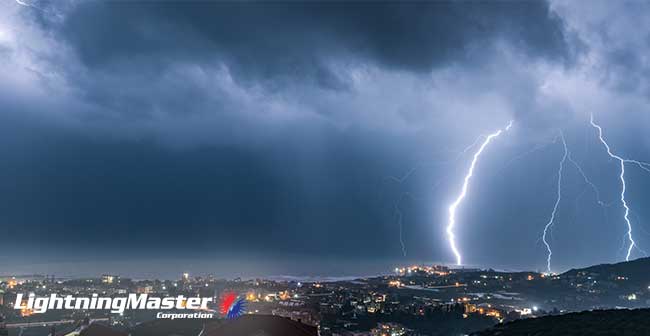It’s Time to Take Lightning Safety Seriously
At the very least, most people will know the basics of lightning safety. You may have heard it being discussed in safety meetings and possibly on television. The main points such as “don’t go outdoors during a lightning storm,” or “stay away from tall trees when lightning strikes,” is known by most people. Thanks to public education, most people know and remember these two main points regarding lightning safety.
The result of all that education has worked. Lightning safety has improved dramatically in the last couple of decades. Deaths and injuries decreased by nearly 40%, compared to previous decades. Despite all this, lightning will always be a constant threat to lives and property, because we cannot stop it from occurring. Therefore, lightning protection for any industry needs to be taken seriously.
Are Your Investments Protected?
The National Lightning Safety Awareness program has put forward recommendations to help improve lightning safety for people and structures alike. The safety awareness group has come up with two basic categories of lightning safety; thunderstorm watch and thunderstorm warning. A thunderstorm watch is when meteorologists keep an eye on thunderstorm activity and report where it is located and most likely to go next.
A thunderstorm warning is when thunderstorms are seen in a specific area. Warnings are the next level as far as safety is concerned. When a thunderstorm warning is issued, it means it is time to go indoors and take necessary precautions. The following is a brief lightning safety checklist that can help you with thunderstorm warnings.
- Do not stand close to tall, lonely structures or trees in the event of a lightning storm.
- If you find yourself on top of a hill or an open field when lightning arrives, immediately leave the area.
- Stay away from water, including swimming pools, and do not touch anything that is metal or damp. Water and wet objects do not necessarily attract lightning, but if there is a strike nearby, it will help carry the current, including on wet ground.
- Do not use telephones and any electrical equipment that needs to be plugged into an outlet. Use only equipment that can run on batteries.
- Avoid using plumbing accessories such as taps or showers.
- Stay from open doors and windows. If found to be open, then close them.
- If you find yourself in a group of people, recommend spreading out more.
Remember the saying “when thunder roars, go indoors” whenever lightning approaches. Technically, if you can hear thunder, it means it’s close enough to strike you or the building. Realistically speaking, the threat of a lightning strike does not go away until at least 30 minutes has passed since the last thunder.
Receive the Guidance You Need for Lightning Safety from Lightning Master Corporation
Keeping up with lightning safety can be a daunting task. When you are running a facility that includes personnel and expensive equipment, you will need to put in preventative measures, if you haven’t already. If you already have lightning protection equipment, then it doesn’t hurt to see if they are up to date and effective.
A company such as Lightning Master corporation is capable of doing both of these tasks. With decades of lighting safety research under our belts, we can give you tailor-made solutions to improve lighting safety. We offer solutions for lightning protection for oil and gas facilities, lightning protection for chemical plants, and even lightning protection for communication towers. Contact Lightning Master today at 727-447-6800 and get all the info on our state-of-the-art lightning safety equipment.


